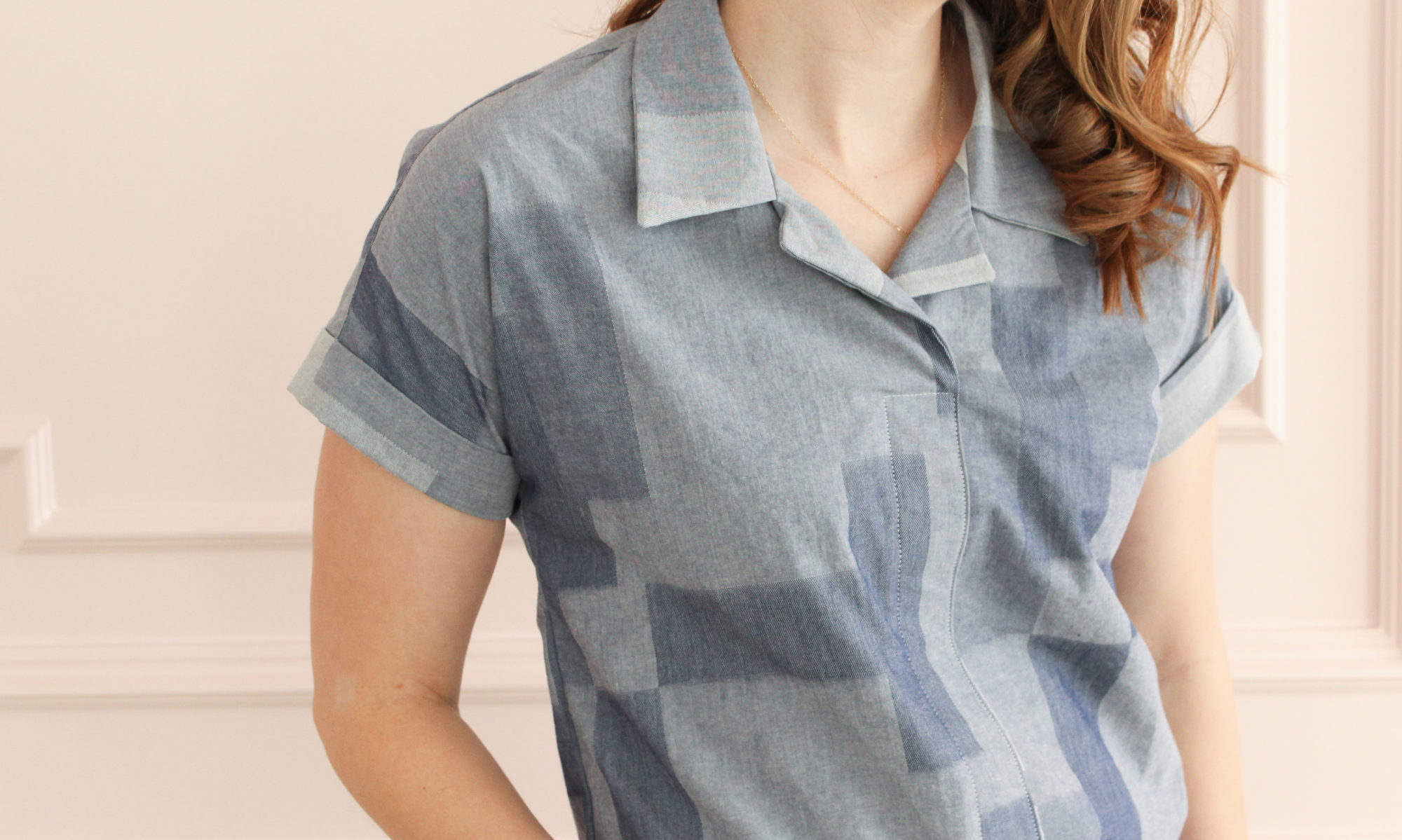Disclosure: The pattern for this post was provided to me by Indiesew. All opinions are my own.
Goooood morning! Today I’m sharing a project that feels like an amalgamation of my sewing journey. I’ve always found joy in creating and had access to a sewing machine from a young age. However, it wasn’t until I took a few college sewing classes that my love of sewing blossomed. Those sewing classes led me to a magical place called Suppose. It was there that my love affair with fabric began. During my five years working there, I came to love quilting and was serendipitously introduced to the world of indie sewing patterns. There I purchased my first indie apparel pattern: a paper copy of the Grainline Studio Scout Tee. Now, years later, I’m here writing a blog post about another Grainline pattern, the Tamarack Jacket.

Preparing the Patchwork
Over the years, I’ve acquired an unhealthily large stash of scraps. Letting go of beautiful fabrics has never been top priority here. In a moment of creative energy, I began piecing together large scraps in October 2018. Then, I cut them down, pieced them back together, and….. forgot about them for nearly a year. Early this October, the project was resumed and I slowly added scraps one fabric or block at a time.

Once the patchwork reached a size of approximately 60″ x 60″, the Tamarack pattern pieces were placed to determine a cutting layout. Then, I roughly cut around each piece leaving about an inch of extra fabric on all sides. Using the roughly cut pieces I cut batting and backing pieces. Finally, each piece was quilted with straight lines 2″ apart and cut down to its proper size.

Sizing Alterations
According to the size chart, I should be a 4 at the bust and a 10 at the hip. Over the years I’ve noticed that Grainline patterns often include a generous amount of ease. Consulting the finished garment measurements confirmed this observation. In the end, I decided to size up in the bust and arms to provide plenty of room for layering. This led me to sew a straight size 6. My only other sizing alteration would be adding 5/8″ to the sleeve length.

Creating the Wrap Front
The simplicity of this particular “pattern hack” makes it feel like less of a hack and more of a pattern shortcut. An added bonus of a simple wrap front vs. the snap or button closure? A fully reversible jacket. Say “hello” to the Ace and Jig inspired side of my Tamarack Jacket. Want the details on how to hack your own? Let’s do this.

Pattern Preparation
- Grab your front bodice pattern piece. Draw a diagonal line connecting the top of the neckline (at the shoulder) to the lengthen shorten line at the center front (view B). Curve line slightly for a smoother look. Remove excess paper to the right of this line. Cut front pieces as indicated. For this version I also chose to curve the bottom of the center front.
- Create four belt loops by cutting a piece of binding fabric 1.25″ x 13.” Fold in half and sew along the length with a 1/4″ seam allowance. Leave short ends open and use a safety pin or tube turner to turn right side out. Cut this into four 3″ pieces. Baste belt loops to front jacket pieces on both the inside and outside.
- Cut a belt piece that is 3″ wide by desired length (mine was about 62″ long). Use a 1/4″ seam to sew around all edges, leaving a 2-3″ opening for turning. Turn right side out and sew the opening.
Construction
- Sew shoulder seams as indicated in pattern step 26. Finish the shoulder seams with bias binding for a clean finish.
- Apply bias binding to neckline and front as indicated in pattern step 27. Do NOT apply bias binding to the back bottom piece yet.
- Follow pattern step 28. Finish this seam with bias binding.
- Sew sides as indicated in pattern step 29. Now, starting at end of one sleeve, use continuous piece of binding to bind the sleeve seam, down the side, across the back bottom, up the other side and across the other sleeve seam. This part is probably the most confusing and time consuming of all. Don’t give up. You’re almost finished.
- Bind sleeve hems as indicated in pattern step 30. Hooray! Trim any stray threads and enjoy your finished jacket.


Final Thoughts
Last week I posted a photo of my in progress patchwork. One commenter called it a “love letter to a fabric stash.” This sentiment has stuck with me since reading it and holds true in this Tamarack Jacket. In it I see bits of old projects, stray quilt blocks, and scraps left from gifts made for loved ones; all pieced alongside bits of my own fabric favorites. Each fabric connects me to a moment in time, joining my sewing past and present into a wearable warm hug.

Note: If you haven’t heard the news, Indiesew will be closing up shop and no longer available after November 30th. Read the goodbye announcement here for further details. I’m going to miss the enrichment and inspiration that Indiesew has contributed to the online sewing world and wish Allie all the best in her future endeavors. Thank you Indiesew for being a cherished part of the community and my personal sewing journey.

Thanks for reading!









































